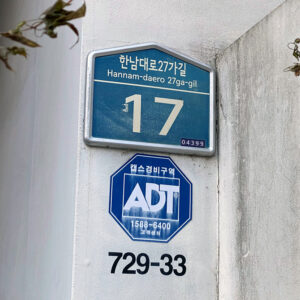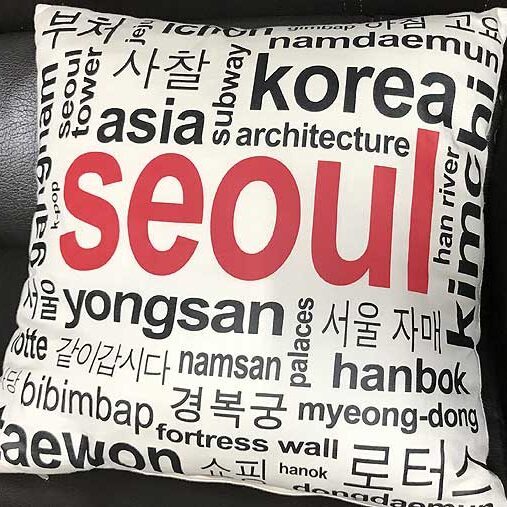Glossary of Korean Navigation Terms
What are all those things after the dashes?

Why is one road called Itaewon-ro but another is called Hannam-daero? What is -dong and -gu? What are all those suffixes?!
The suffix -ro means road. A -daero is a wider road or boulevard (>6 lanes). Likewise, -gyo means bridge and -daegyo is a larger bridge, 6 lanes or more. The -dong suffix is for neighborhoods, but is sometimes dropped. For example almost nobody actually says “Itaewon-dong”. Similarly, many people just say “Yongsan” instead of “Yongsan-gu” (district), and Seoul-si (city) is often just described as Seoul.
Sometimes the suffixes can be helpful because of similar or duplicate names of municipalities around the country. For example, our neighborhood Hannam-dong should not be confused with the city Hanam-si several miles away.
A san is a mountain. So nearby Namsan actually means Nam Mountain. And the Han River is called Hangang because a gang (the a is pronounced ah) is a river.
Some Korean adaptations of anglo words can be a little deceptive. The word “apateu” (again, all the a letters are pronounced ah – the a-sounds like in the words fat or cable do not exist in Korean) is used to describe a large apartment building, often one of a large complex of buildings that Koreans call towns. But our building has only seven apartments. Yet if you spell out apartment instead of abbreviating it to “Apt.” when ordering things, a confused delivery person may wind up looking for a town instead of our little villa. Using the Hangeul, i.e. writing 301호 instead of Apt 301 helps remove doubt.
The street and house numbering gets a little more complicated. A secondary road can be a -gil. For example we are house number 17 on Hannam-dearo 27 ga-gil, where Hannam-daero is the primary road, 27 gil is (supposedly) the twenty-seventh secondary road branching from the south end of Hannam-daero and 27 ga-gil is the first diverging road from 27 gil.
And that’s just part the country’s “new and improved” addressing system!
To say that GPS receivers and smartphone navigation apps are life-changing here is a massive understatement.
This page is mostly meant to be a brief primer for terms we use on our web site and in our house manuals. More information can be found via the links below.

Addresses in South Korea (Wikipedia):
https://en.wikipedia.org/wiki/Addresses_in_South_Korea
Road Name Address Introduction (Korea Ministry of Interior and Safety):
https://www.juso.go.kr/CommonPageLink.do?link=/eng/about/GuideBook
Oh, and what about the “729-33” shown in the first picture? That’s a vestige of the Korea’s old address system, short for “729-33 Hannam-dong” where house numbers were assigned in the order that land lots were purchased and properties were built. Not everyone shows the old numbers – we try to be nice. And it’s easier for some folks. We’re a bit OCD so ours are applied in weatherproof stick-on labels, but sometimes you will also see the old house numbers scribbled in marker on mailboxes.
Honest Reviews
“What an amazing place. Great service, great location, great apartment. Large open plan kitchen, living room area where our group could hang out and talk. The kitchen has all you need to cook if you need to and the beds were all very comfortable. You can’t ask for a better location in Itaewon – tons of small, cool, hip bars and restaurants within 2 minutes walk, yet on a quiet street so you don’t get a lot of noise. The fact it has secured, free parking on site was amazing as well as we had a car with us and parking is never easy in Seoul. Can’t recommend enough!“
March 2019 – Andrew H.
“Great place for a family to stay and visit Korea. Place is exactly as pictured, spacious is an understatement. All the amenities that you’ll need – close to subway, restaurants, and stores. Hosts were extremely responsive and made sure any question was answered promptly.“
May 2019 – Gregg B.
